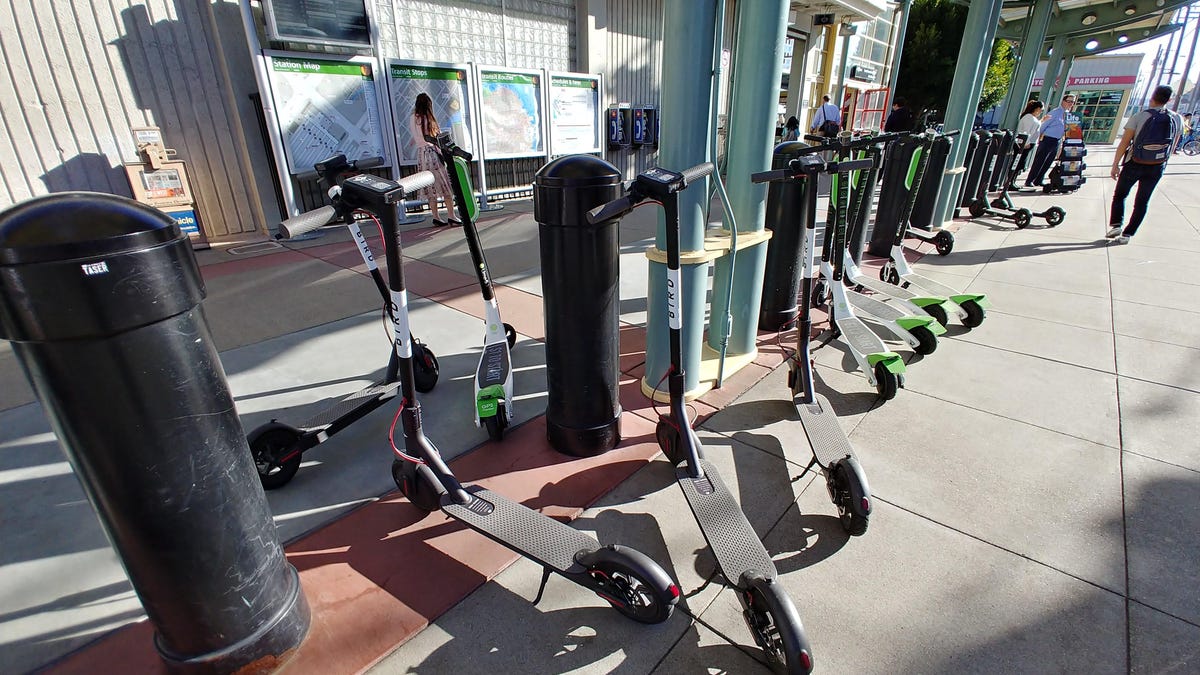Electric scooters are gone from San Francisco, for now
But they'll be back.

This is what San Francisco's Caltrain station looked like a couple of months ago.
Something changed last week in San Francisco.
Downtown traffic was still a mess as cars dodged never-ending construction and cyclists streamed down narrow bike lines. And people still jammed the sidewalks on their way to work. But one element of this insanity was missing.
The infamous electric scooters had disappeared.
Sidewalks once crowded with the dockless, rentable, motorized vehicles are now open. The Embarcadero's earlier chaos -- with people on scooters snaking through throngs of pedestrians along the boardwalk -- seems orderly. Walkways, bike racks and wheelchair access ramps are no longer blocked by abandoned scooters.
"When they first came out, there were a ton of them," said Judd Blair, a software engineer who works downtown. "When they were gone I definitely noticed."
The scooters vanished the same way they'd appeared: overnight.
At the end of March, three companies unleashed roughly 2,000 electric scooters onto San Francisco's streets, surprising both lawmakers and local residents.
Some people took to the scooters immediately, loving the convenient and cheap way to get around town (they cost $1 per ride plus 15 cents a minute). Others hated them, calling the scooter phenomenon by many names: Scootergeddon, Scooterpocalypse and Scooter Wars. Some expressed their rage by tossing the scooters into trash cans, hanging them from trees, sabotaging them, and even smearing them with feces.
I decided to conduct a quick, completely unscientific survey of how San Franciscans viewed a city freed, for now, of thousands of electric scooters.
"They're not blocking the sidewalk anymore," said Shu Xu, a software engineer who works downtown. "But that didn't really bother me."
This is what the Caltrain station looks like now. Not a scooter in sight.
Blair said he felt "neutral" about whether the scooters are on the streets or not. "I kinda like them in theory," he said. "If everyone is well-behaved, I think they're a good addition to transit."
Another San Franciscan who works downtown, Drew Briscoe, said he was happy to see the scooters gone.
"The thing I really don't like about them is that they don't make any noise, so when you're walking you never know if one is coming up behind you," he said. "I've had people almost hit me."
Briscoe's experience isn't isolated. Within weeks of the scooters rolling out, the city's Board of Supervisors had to deal with hundreds of complaints, including one angry constituent who said he broke his toe tripping over one blocking the sidewalk. By April, the city passed a law regulating this new form of transportation.
The law says the scooter companies can continue to operate but they have to get permits and the number of scooters they can put on the streets will be limited to 1,250. And there was a catch. To quality for the permits, the scooter companies had to clear the roads of their vehicles until the end of June, so the city could process their permits.
The companies -- Bird, Lime and Spin -- have all said they're complying. Hence the empty streets. But the current reprieve will be short-lived.
Come July, the scooters will be back with a vengeance.
The Smartest Stuff: Innovators are thinking up new ways to make you -- and the world around you -- smarter.
CNET Magazine: Check out a sampling of the stories you'll find in CNET's newsstand edition.

